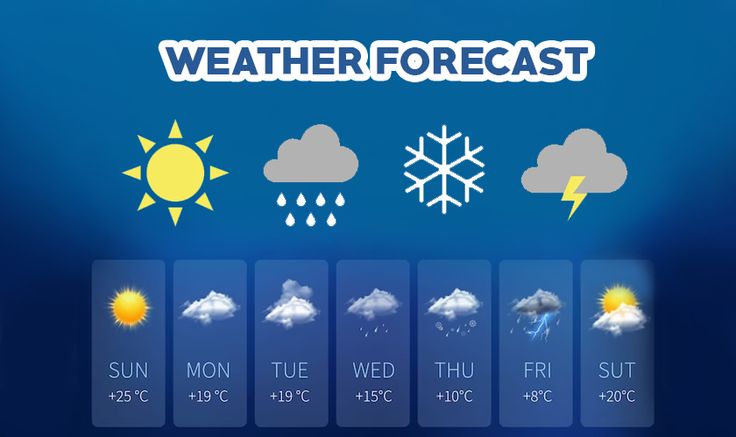Predicting the weather without the aid of advanced technology can be both practical and fascinating. By observing subtle signs in nature, you can gain valuable insights into impending weather changes. From detecting shifts in wind direction to noticing changes in air pressure and humidity, nature provides a wealth of clues that can help forecast upcoming storms or changes in weather patterns. In this guide, we’ll explore various techniques for predicting the weather using simple observations and natural phenomena. Whether you’re near the ocean, in a forest, or simply stepping outside your door, mastering these techniques can empower you to anticipate weather changes and better prepare for whatever Mother Nature has in store. So, let’s embark on a journey of discovery and learn how to read the signs of nature to predict the weather ahead.
Wind and Air:
- Determine wind direction by understanding its cause: air movement from high to low pressure. Westerly winds often signal good weather, while easterly winds suggest impending bad weather.
- Utilize grass or flower petals: Throw them into the wind and observe their movement.
- Employ the wet finger method: Wet your finger and hold it out; the cool side indicates wind direction.
- Observe smoke from a fire: High pressure sends smoke upward, while low pressure causes it to spiral down. Downward spiraling smoke suggests impending bad weather.
- Spiral down indicates imminent bad weather: The presence of a low-pressure system signals its arrival over your area.
- Look out for calm conditions: Prior to a storm, the low-pressure system can disrupt normal wind patterns, creating a temporary stillness. You’ll notice a lack of wind and calm waters near you, signaling an impending storm.
- Be alert for other storm signs: Keep an eye out for dark clouds, which further indicate the approaching storm.
- Trust your senses: Before a storm, take a deep breath and notice any changes in the air’s scent. Wet smells become more pronounced, indicating the approach of rain. Look out for a compost aroma as plants release waste, and a swampy odor near wetlands, both signaling an impending storm.
- Pay attention to smells: If you detect a compost or swamp gas scent, it’s a strong indicator that a storm is on the horizon.
- Check for humidity: Before a storm, observe indicators like frizzy hair, curling leaves, and swollen wood, which signal high humidity. Pine cones can also help—closed cones indicate high humidity, while open ones suggest dry air.
- Signs of high humidity: Look for frizzy hair, curling leaves, and swollen wood, all pointing to elevated humidity levels.
- Pine cone test: Closed cones signal high humidity, while open cones indicate dry air.
- Consider regional conditions: In consistently humid areas, rely on alternative observations to predict weather changes.
- Observe ocean swells: Near the ocean, watch for swells, often caused by winds carrying a storm system from the sea. Swells indicate the potential approach of rain.
Conclusion :
Harnessing the power of nature’s signs to predict the weather offers a timeless skill that connects us to the rhythms of the natural world. By observing changes in wind direction, air pressure, humidity, and natural phenomena such as ocean swells and pine cones, we can become adept at forecasting weather patterns without relying on technology. This ancient art of weather prediction not only enhances our understanding of the environment but also enables us to adapt and prepare for upcoming weather events. As we continue to explore and appreciate the subtle cues provided by nature, we deepen our connection to the world around us and cultivate a greater sense of stewardship for our planet. So, let us embrace the wisdom of the elements and embark on a journey of discovery, where each observation brings us closer to unraveling the mysteries of the weather.
Frequently Asked Questions:
- How can I predict the weather without using technology?
You can predict the weather by observing natural signs and phenomena such as changes in wind direction, air pressure, humidity, and the behavior of animals and plants. - What are some indicators of impending storms in nature?
Indicators of approaching storms include shifts in wind direction, rising humidity levels, swollen wood, frizzy hair, curling leaves, closed pine cones, and ocean swells caused by winds blowing storm systems from the sea. - Can pine cones help predict humidity levels?
Yes, pine cones can serve as a natural hygrometer. Closed cones indicate high humidity, while open cones suggest dry air. - Is it possible to predict weather changes in consistently humid areas?
While it may be more challenging, you can still predict weather changes in humid areas by relying on alternative observations such as shifts in wind direction, changes in animal behavior, and other natural signs of impending weather changes.
- How Does Automated Scheduling Save Time and Boost Engagement? - April 16, 2025
- 21 Delicious High Protein Foods - May 31, 2024
- Black Seed Oil: Health and Beauty Benefits - May 30, 2024


